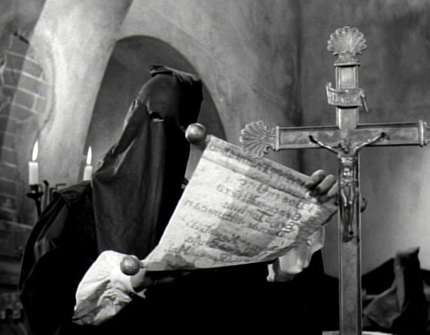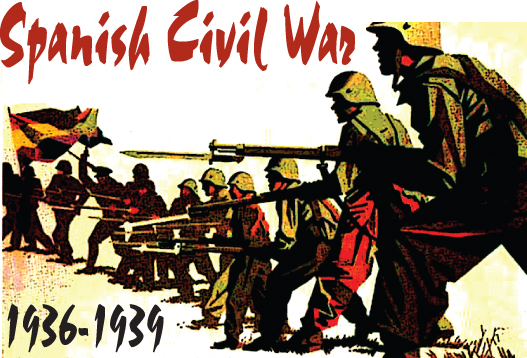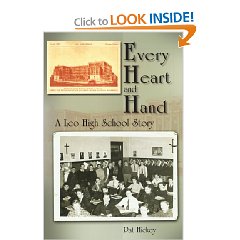American Catholics supported Franco - rather, they would not support the Communists in Spain.
Catholics are told by editorial boards, news-readers, hack politicians, academics and activists to 'get on the right side of history' and abandoned their Church and consciences and embrace the reality that marriage must be redefined to include homosexual couples. History does not have sides to it. Armies may face one another in opposition and each may be considered a side. One faction, or side will win and one will lose a battle and perhaps a war. But history does not take sides; only people take sides.
The 'right side of history' in early decades of the 20th Century depended on where you happened to stomp your feet - some goose-stepped and some fox-trotted.
In 1931,Spain's King Alfonso was forced to abdicate the throne. Thanks to Napoleon,the Industrial Revolution and the European imperial rush to colonize the un-claimed parts of the globe, Spain crashed from the world power that dominated Europe from the 15th -19th Centuries, to the sad remnant armed with Mausers and Maxims against Col. Teddy Roosevelt;s Rough Riders, and Admiral Dewey's fleets.
Spain is a Catholic nation. Some abandoned their faith for the secular creeds of Marxism and anarchy. Some found a balance with their faith and labor because Pope Leo XIII defended the right to organize trade unions. There were still folks who were loyal to the monarchy and they were called Carlists. Some demanded that Spain follow Italy into fascism and the were called Falangists.
In 1932, the Soviet Comintern decided to make Spain International.
In 1933, a coalition of the Center-Left took the majority seats in Cortes:
The Comintern of Soviet Russia in 1932 made infiltration into Spain a priority, thus insuring a strong communist presence. Many workers, dissatisfied with the remorseless face of the liberal capitalism that had grown up under the late monarchy, began to turn in increasingly radical directions. Two separate extremist groups began to forge an alliance. One was the anarchists, those dedicated to the overthrow of any government; the other was the syndicalists, who wanted no government but only a series of disparate workers communes. The anarcho-syndicalists were especially strong in the ethnically separate Basque region and in the autonomous region of Catalonia, around Barcelona. It is important to note that the strength of the anarcho-syndicalists was not primarily among the farming peasantry, but rather took root with the working classes attached to industry in large cities. In the elections of 1933, a center-right coalition was voted in, but this was largely ineffective due to the destabilizing influences of the anarcho-syndicalists and the operations of the new communist party of Spain. New elections were to be held in 1936. These would be decisive in determining the course of Spanish history.
Election to the Cortes, or the parliamentary assembly of Spain, was an exceedingly complex process. It was anything but a direct popular election and many places, especially cities, were assigned a disproportionate number of representatives. This will be shown by the vote totals.
Votes in the Spanish elections of 1933Right (Carlists, Catholic Action, Liberal Monarchists, Falange), 4,570,744 votes, 133 seats
Center 340,073 votes, 77 seats
Popular Front (Communists, Socialists, Catalan Separatists, Left Republicans), 4,346,559 votes, 263 seats
One can see that even though the center-right, which had governed since 1933, received over 500,000 more votes, the Popular Front had a majority of 26 seats over the old coalition. As a salient example of unrepresentative allotment, the center, which polled only 340,000 votes, received half the number of the seats that the right obtained with their 4.5 million votes. Ultimately, it was the socialistic Popular Front that formed a government. As each month passed, the regime acted in an increasingly despotic and radical manner, successively casting off ministers who were not liberal enough. Against this regime the military, the Carlist traditionalists and the political right rebelled. American Catholics went to great lengths to explain the facade of this "democratic" election process to the general public.Progressive America was not accepting this - American Catholics found themselves on the 'wrong side of history.' American Catholics had become a political force. George Babbitt was confronted by Studs Lonigan. American Catholics ran a coreligionist, NY Governor Al Smith for President in 1928 and lost. However, they formed something of a coalition with mainline Progressive Protestants, who demanded abortion and birth control; over the New Deal and elected FDR. Catholics remained very anti-Communist and somewhat isolationist and Progressives were delighted with Communism and were happily isolationist, until Spain got messy.
_01.jpg)
Hollywood cast Catholic Spain as the villain - universal and historical. Claude Raines, Basil Rathbone, the Inquisition tortured Errol Flynn, John Garfield and Tyrone Power in movies about pirates, gun runners and rebels with one cause.

Bernard F. Dick is of the opinion that Hollywood's preoccupation with portraying opposition to the fascist forces emerged long before September 1939: "Hollywood began its war on fascism before fascism began its war on democracy." He asserts that the film industry was conscious of political turbulence in Europe since the early 1930s, but veiled "their fascist aggression in allusion and metaphor until...history intervened." He goes on to support this claim with a discussion of the various attempts to produce meaningful films about the Spanish Civil War, a conflict that was never mentioned by name in any of the movies until 1940, and then only to say that it was over. According to Dick's examination of Hollywood wartime production, the OWI wielded enough influence to prevent the expression of firm political convictions in early war films, and the filmmakers were left to follow its advice.
The Republic's Popular Front was dominated by Soviet trained commissars and immediately churches and monasteries were confiscated by the Republic, because the Church needed to pay its 'fair share' and immediately bishops, priests and nuns were executed. Peasants and workers who objected to this savagery were executed.
The trouble in Spain forced American Catholics to break ranks. General Franco led a rebellion against the Communist dominated Republic. Donald Prudlo's fine article for Catholic Culture details the powerful unity of American Catholics in opposition to the Popular Front and the support it maintained for Franco's government. The American Catholic Church remained fiercely and uncompromisingly anti-communist, even among its academics and politicians, unlike today.
Prudlo noted:
In their battle to justify Franco to the American public, Catholic journalists faced an extremely difficult battle. One of the most basic obstacles encountered was the persistent "Black Legend" regarding Spanish history, a view that had taken root in Reformation England and spread from there to all of the English-speaking countries of the west. This legend excoriated Spain as a backwards, religiously dominated gothic land of torture and inquisition. Hilaire Belloc was credited by Catholics as the first historian to plow through the patina of prejudice and hatred to offer a balanced English-language account of Spanish history.20 McGuire was concerned with showing that all of the news correspondents in Spain were infected with this, and as a result were not being impartial. These correspondents presented Franco as standing for the forces of Church, inquisition, privilege and repression, against idealistic socialists, communists, and anarchists trying to shed some light on backward Spain.21 The editors of The Sign were constantly warning American Catholics not to trust major media outlets, but rather to get their news from the National Catholic Welfare Council News Service, as mediated through the 300 or so Catholic periodicals in the country.22 America attempted to reshape the terms used to describe the conflict. The editors railed against the tyranny of calling the Rightists "rebels" and the communists "loyalists." The rebels, "not the government forces, are fighting the battle of world democracy," the writers stated.23 Catholic journalists refused to let Protestant and popular news outlets cast the struggle in terms of democracy vs. totalitarianism.Today, the struggle is much less tangible and much more hostile; gay marriage is much more than a ceremony and license. Gay Marriage and abortion are secular doctrines that Catholics, if they are to be considered American citizens, must not merely accept but heartily acclaim.
Catholic support for Franco was very unpopular, but the Church and Catholics did not cave. Donald Prudlo's article concludes:
In the end the unpopular position of the Catholic Church in the war resulted in very few negative repercussions. Perhaps if World War II had not followed hard on the heels of the Spanish conflict there would have been more time for a backlash, but as it was the Church was prepared for war. Had Catholics remained in the camp of the old liberal isolationists one can only imagine what a shock the coming of the next war would have brought. As it was, the Church entered the forties and fifties as a unified group with a common identity ready to face the challenges of those decades. It is ironic that the terrible bloodletting of Spain helped to bring forth a strong and tightly knit American Catholic presence. Sometimes great good can come from the most unexpected of directions.Wonder how we will do?






No comments:
Post a Comment